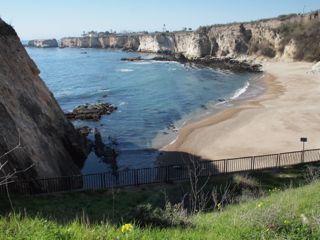
-
| 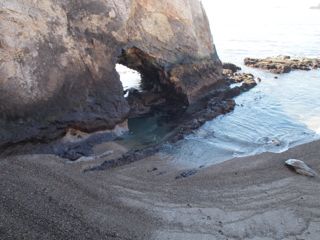
-
| 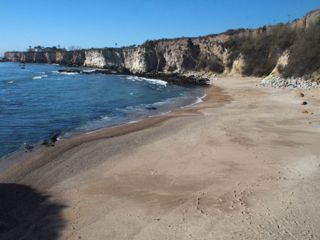
-
|
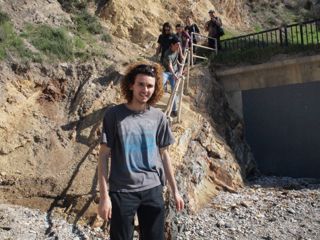
-
| 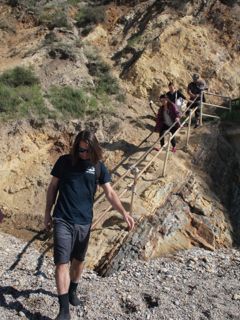
-
| 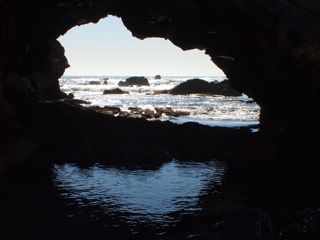
-
|
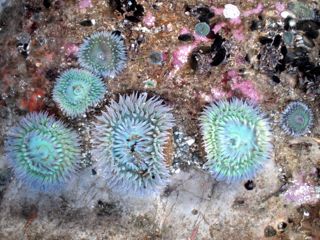
Anthopleura xanthogrammica (giant green anemone)
| 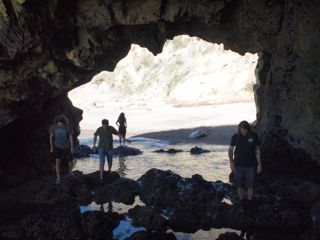
-
| 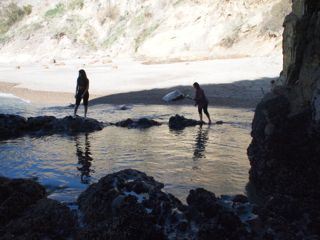
-
|
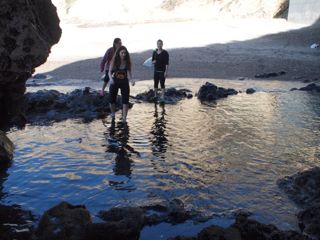
-
| 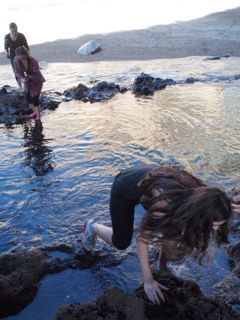
-
| 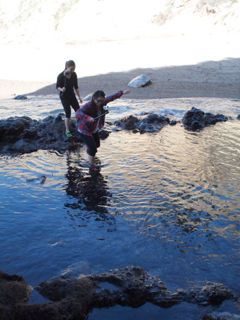
-
|
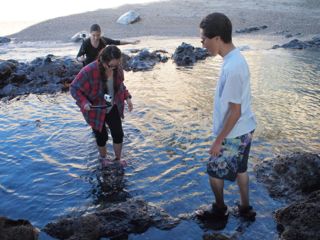
-
| 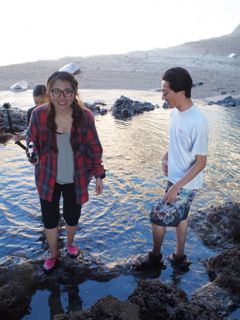
-
| 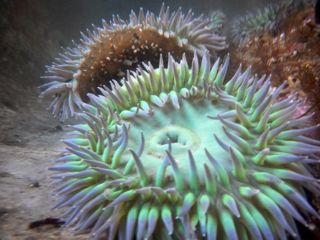
Anthopleura xanthogrammica has no radiating lines around the mouth and has dense, irregular pustules on its exterior.
|
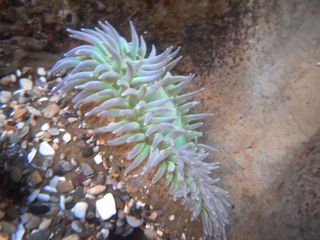
-
| 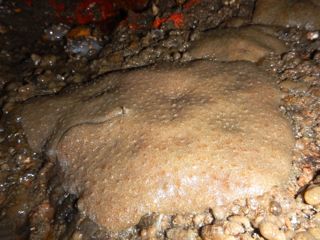
-
| 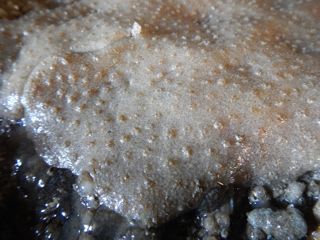
A compound ascidian (Chordata: Tunicata) has relatively little direct connections between the
individual zooids, but they share a common tunic and exhalent openings. The zooids are genetically identical because they originate
through asexual division.
|
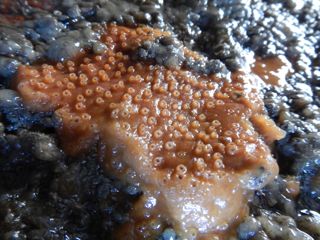
An unidentified demosponge (Demospongiae)
| 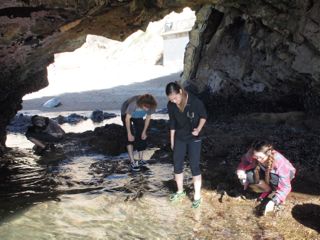
-
| 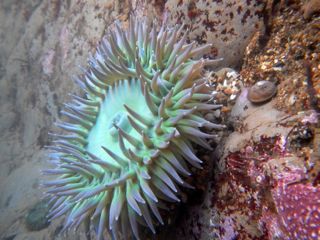
Anthopleura xanthogrammica
|
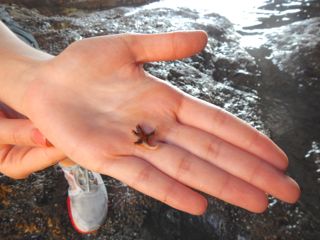
-
| 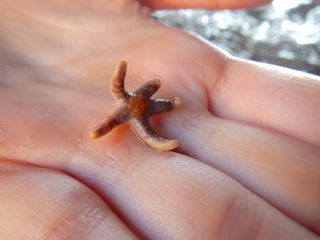
Henricia pumila (dwarf mottled brooder) was described by Eernisse, Strathmann, and
Strathmann in 2010 here:: Zootaxa 2329: 22-36.
| 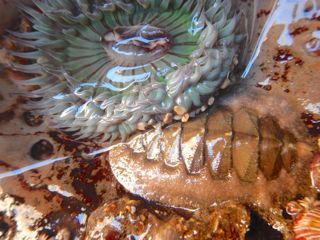
-
|
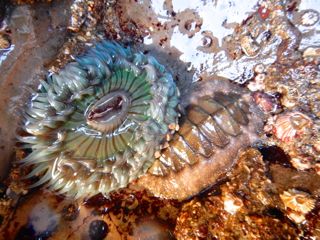
Anthopleura sola (sunburst anemone) and Mopalia hindsii
(Hind's Mopalia). Note that A. sola has radiating lines. M. hindsii is common in sea caves but is not encountered very
often otherwise in central California.
| 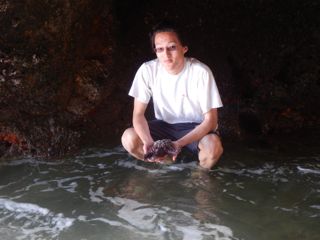
Adam is holding a mature and apparently healthy Pisaster ochraceus (ochre seastar), whose
populations have been dramatically reduced by a devastating seastar wasting disease in recent years.
| 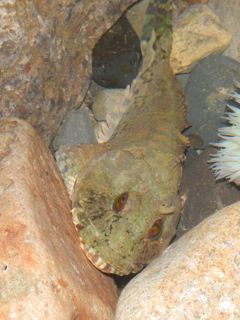
-
|
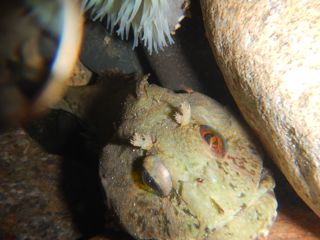
-
| 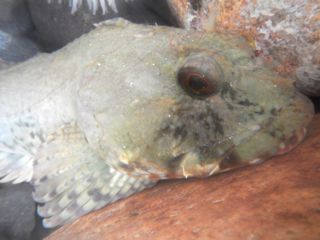
-
| 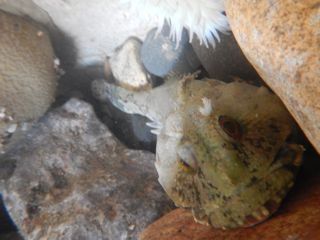
Tentative: A large sculpin (Cottidae) known as a cabezon
(Scorpaenichthys marmoratus) because it has a cirrus over each of its eyes and one on its snout. Cabezon eggs are poisonous,
and have produced near fatal results in humans, so don't eat the roe.
|
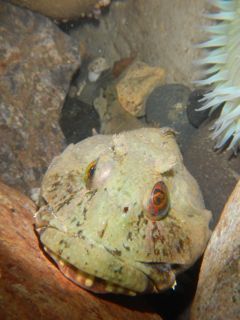
-
| 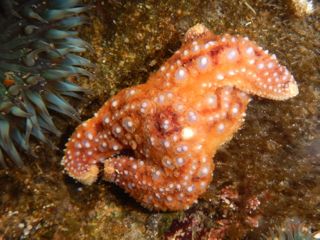
-
| 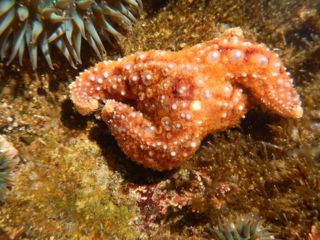
We saw several small Pisaster spp. including this juvenile P. gigantea.
|
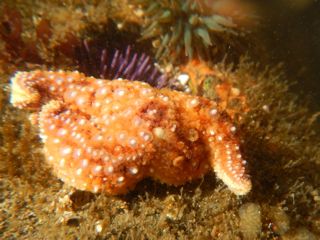
-
| 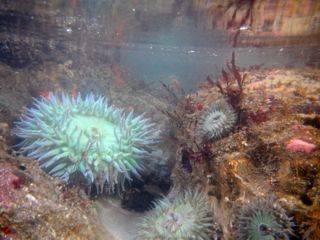
-
| 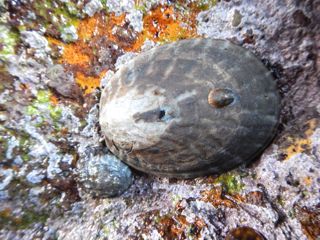
The largest of this trio of limpets is Lottia gigantea (owl limpet), a territorial
grazer that is a sequential hermaphrodite, maturing first as a male and later changing to female.
|
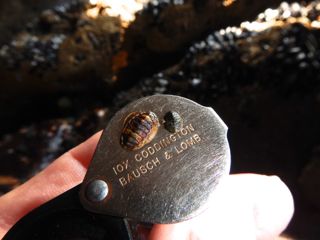
-
| 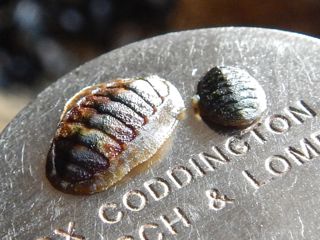
The smaller of the two chitons is an adult sea cave brooder, Cyanoplax
caverna (Eernisse, 1986). Most chitons are free spawners, but this one is among a minority (about 5 percent) of chiton species that are brooders: they
brood embryos on either side of its foot until the young can crawl away. It is even more unusual, because most chitons have separate sexes,
and this one is one of two known hermaphroditic species. Specifically, it is a simultaneous hermaphrodite that
has mostly ovaries in its gonad, with only tiny bits of testis scattered in between. Like the other known hermaphrodite, which is also a brooder,
Cyanoplax fernaldi (Eernisse, 1986), it is thought to regularly self fertilize its embryos.
| 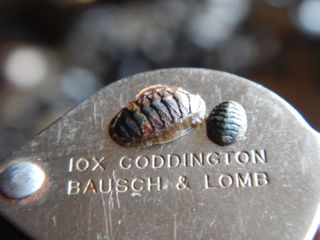
The larger of the two chitons in this image
is probably a juvenile
of a much larger and closely related species, Cyanoplax hartwegii, whose reproduction is more typical; it has separate sexes, free spawns
gametes, and its fertilized embryos hatch within about a day of spawning. Within Cyanoplax, these two
species are similar in having irregular warty tubercles on the lateral margins of its intermediate (six middle) valves.
Other Cyanoplax spp. have more regular pustules at the valve margins. They also come out close to each other
in phylogenetic estimates based on DNA sequence comparison (Eernisse, in prep.). For scale, the word "Coddington" on my
hand lens measures 12mm at its widest.
|
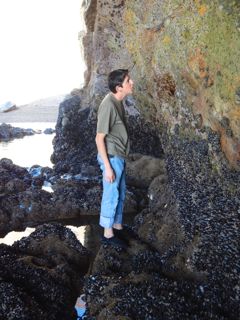
-
| 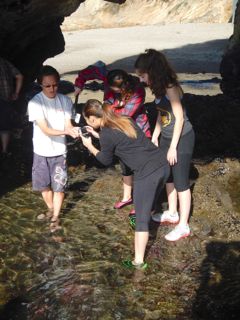
-
| 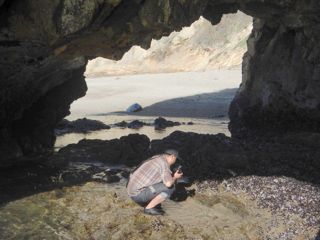
-
|
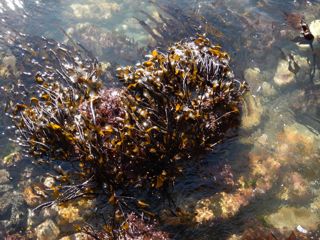
-
| 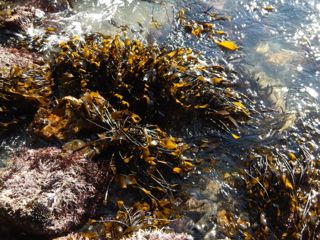
Laminaria sinclarii is a stoloniferous kelp, which means that it can spread
asexually so that a cluster like this could all be from a single ancestral kelp.
| 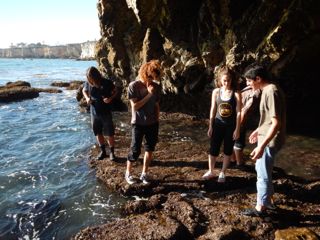
-
|
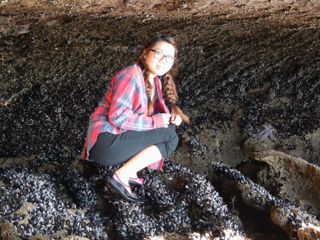
The sea cave brooder (Cyanoplax caverna; see above) is found right above
Michelle's head on the sea tunnel roof, but requires careful searching.
| 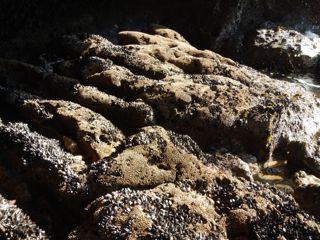
-
| 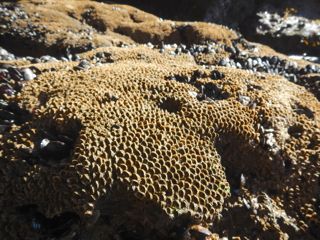
Phragmatopoma californica are polychaetes that, like other members
of the family Sabellaridae, select and cement sand grains to construct their tubes. This species is also known as the sandcastle worm or the honeycomb
tube worm. Some other polychaetes are truly colonial, dividing asexually, but these are not.
Instead, individual worms settle as larvae from the plankton to form aggregations.
|
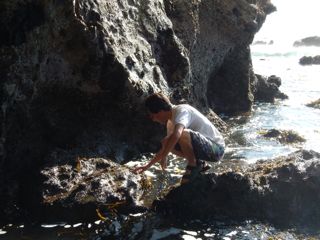
-
| 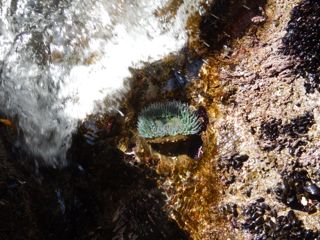
-
| 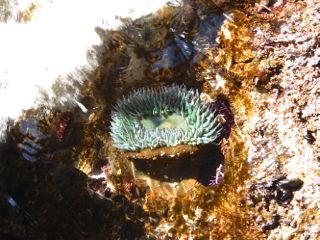
-
|
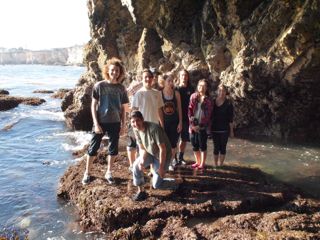
-
| 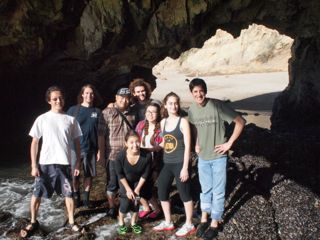
-
| 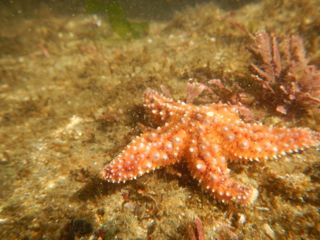
The same Pisaster giganteus juvenile we found contorted in a burrow,
now cruising around underwater.
|
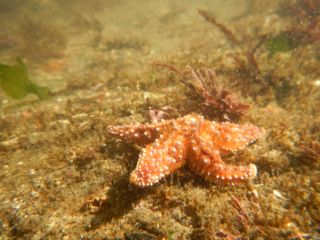
-
| 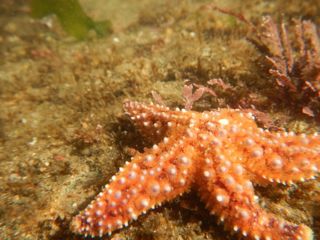
-
| 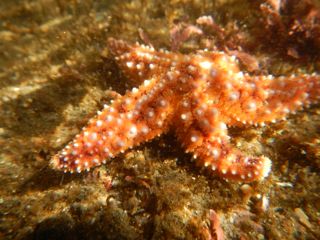
-
|
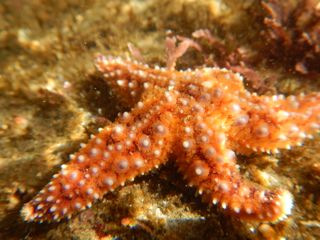
-
| 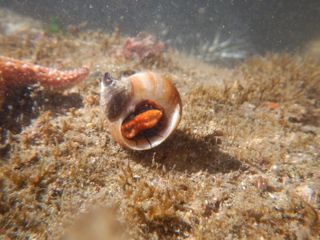
An upended brown turban snail (Chlorostoma brunnea) with a single
large slipper snail, Crepidula adunca, attached.
| 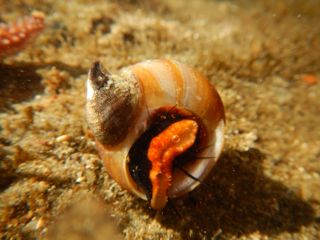
It is more normal to see a small (male) C. adunca attached to the
shell of a larger female, in this sequential hermaphrodite species, so she is probably a bit lonely.
|
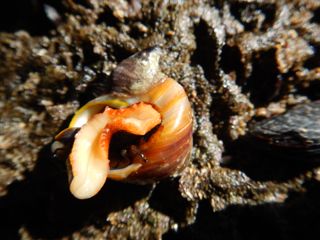
-
| 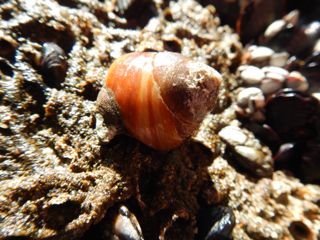
-
| 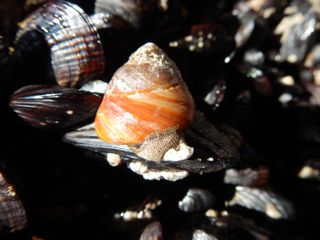
-
|
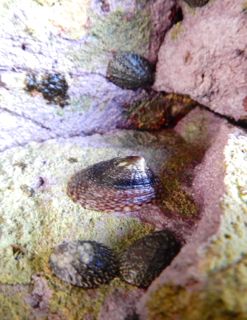
A shield limpet (Lottia pelta) surrounded by three
finger limpets (L. austrodigitalis or L. digitalis)
| 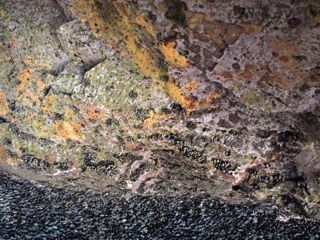
-
| 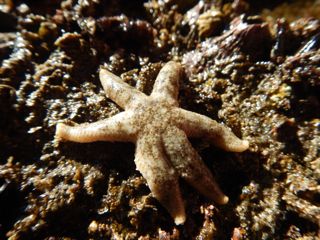
Members of the genus, Leptasterias, are small six-rayed seastars that brood their large yolky embryos
until they crawl away as juveniles. We are reported to have a complex of species in this genus along our coast, but sorting them out
has remained a challenge.
|
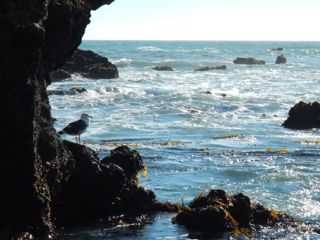
-
| 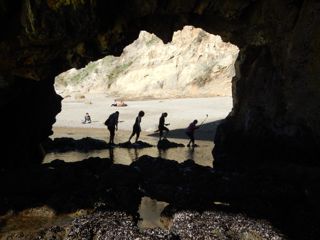
-
| 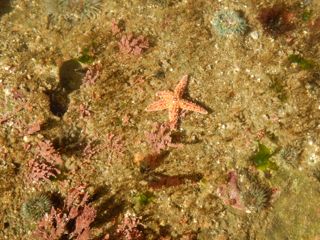
-
|
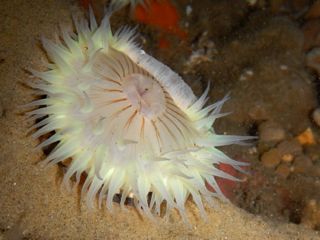
To me, this and the next one look like isolated
Anthopleura elegantissima but they could instead be the closely related solitary anemone, A. sola.
| 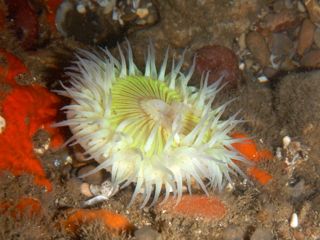
-
| 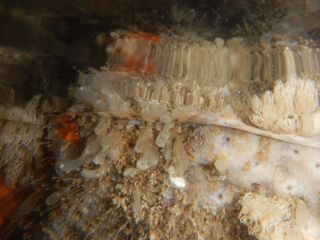
Bryozoans, tunicates and sponges, underwater in a tidepool with reflection
|
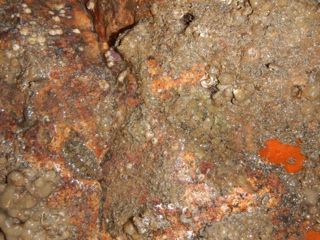
The chiton, Mopalia hindsii, seems to graze
on colonial animals such as compound ascidians.
| 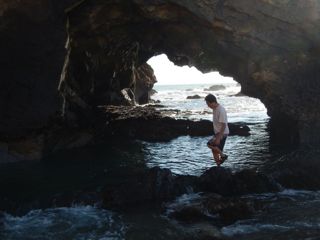
-
| 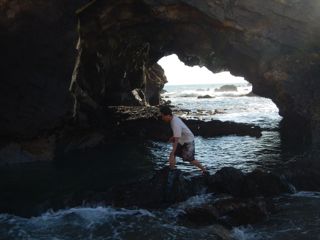
-
|
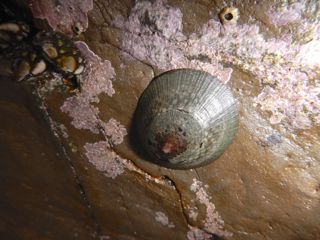
Tentative: Lottia persona
| 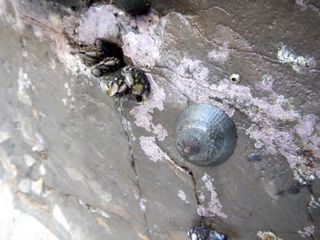
-
| 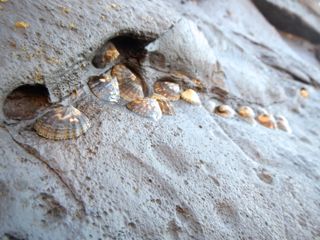
Rock ecomorphs of finger limpets. The southern finger limpet,Lottia austrodigitalis, and the
northern finger limpet, L. digitalis, co-occur in this region of the central California coast, but the southern finger limpet
tends to do better in the high intertidal on rocks at least occasionally exposed to the sun. They tend to cluster on vertical rock
surfaces where shorebird predators would have trouble standing to knock them off with their bill.
|
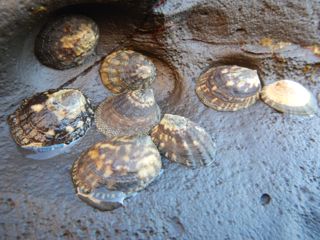
-
| 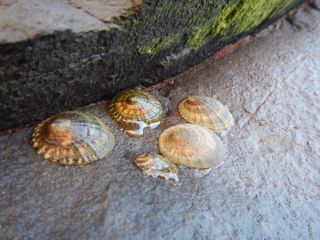
-
| 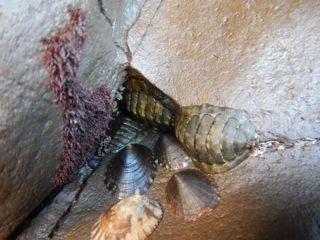
Three Cyanoplax hartwegii (Hartweg's chitons) next to three
Lottia pelta (shield limpets). The limpet at the bottom of the image is probably a finger limpet.
|
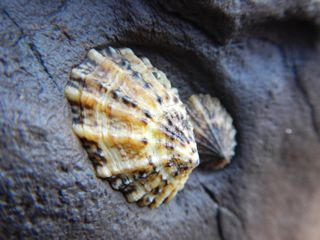
Two Lottia scabra (rough limpets) have heavy
ribs all around their shell, not just toward the posterior end as in finger limpets. L. scabra make home depressions in rock
that is soft enough for their foot secretions to break down, so are able to resist bird predation even on horizontal rock platforms.
| 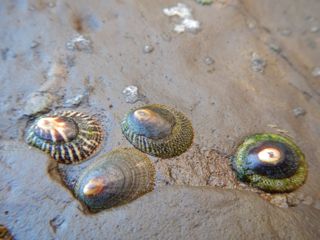
The three limpets on the right are interesting. They are possibly either
Lottia fenestrata (which are rare in this part of the coast) or Lottia sp. B Hewson and Eernisse, in prep., which are rare north of Point
Conception.
| 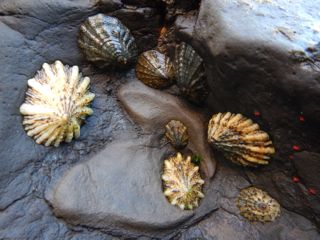
The four darker limpets, one small one in the middle and three above it, are finger limpets, with ribs
only toward the posterior. The other four are rough limpets, with heavy ribs all around.
|
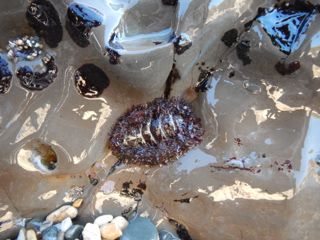
-
| 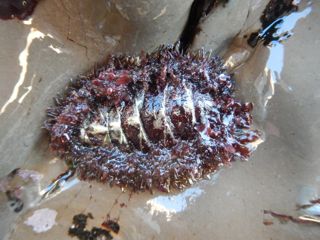
Mopalia muscosa (mossy chiton)
| 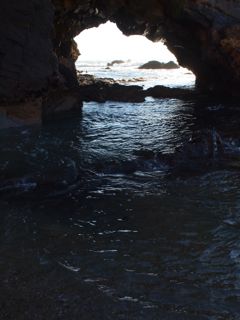
-
|
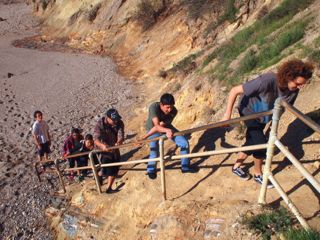
-
| 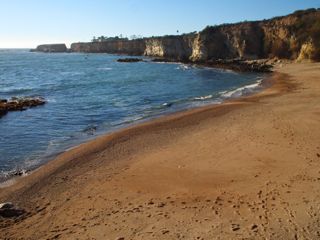
-
| 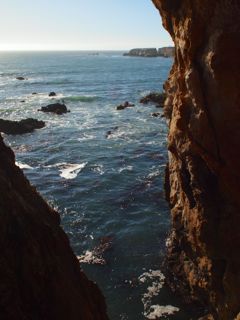
-
|
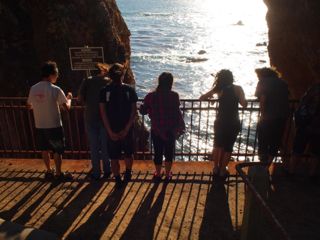
-
| 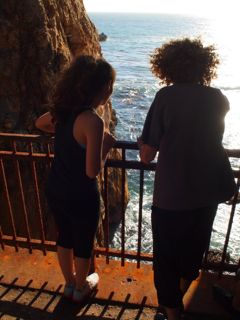
-
| 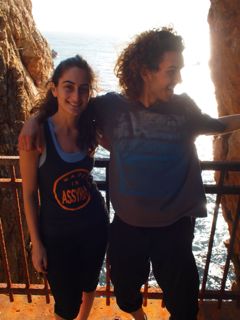
-
|
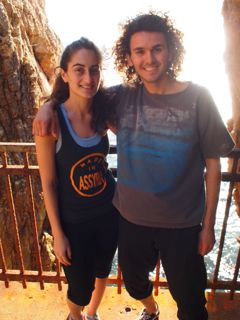
-
| 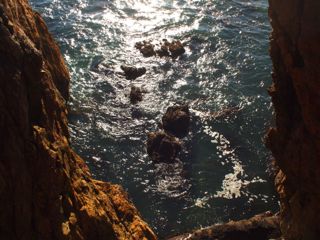
-
| 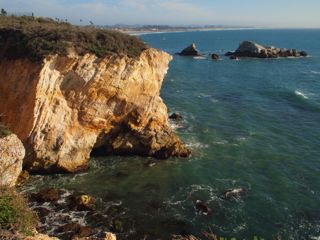
-
|
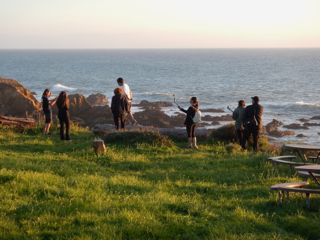
-
| 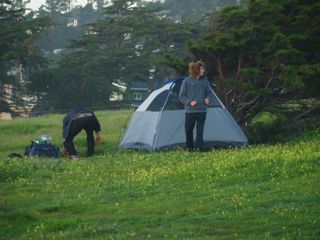
-
| 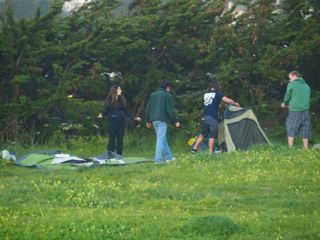
-
|
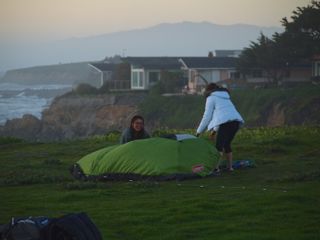
-
| 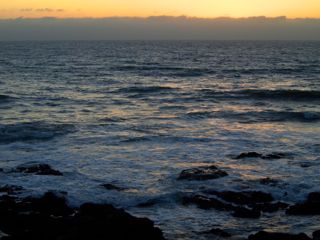
-
| 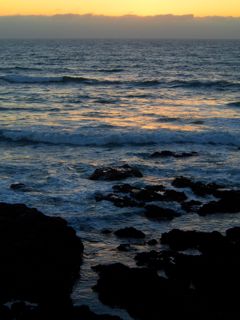
-
|
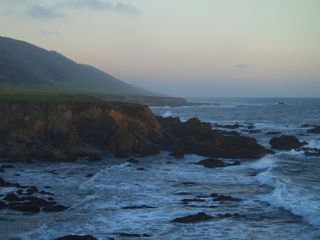
-
| 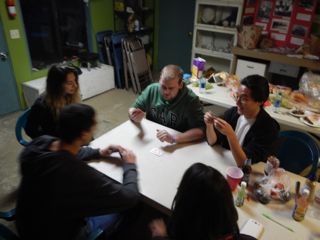
-
| 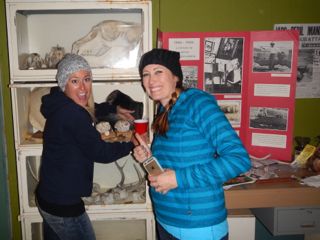
-
|
 Under Construction!
Under Construction! Under Construction!
Under Construction!